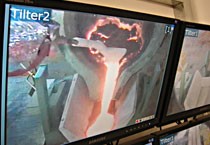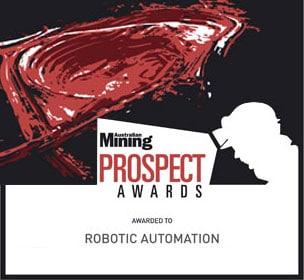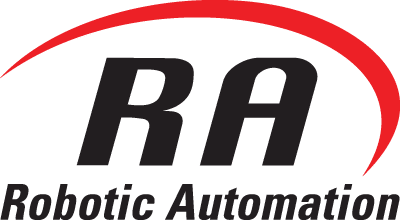Robotic Material Handling / Dispensing
A REMOTE ROBOT FOR A REMOTE SITE

CLIENT : BHP Billiton Nickel West is the world’s third largest producer of nickel-in-concentrate, providing 16 per cent of global supply.
PROBLEM : Our client, BHP Billiton’s Kalgoorlie Nickel Smelter, produces nickel matte in granular form, supplying to metal-working companies worldwide. A challenging stage of the production begins as pots of molten matte are transported by gantry crane to the ‘pot tilter’ stations. The crane places the pot into the tilter mechanism in preparation for the granulation process.
As a result of cooling during the pot’s transit, crust (also known as dross) begins to form on the top of the molten material. This dross moves around during the tilting and pouring operation, which can interrupt the flow of material and potentially cause an explosive reaction or spill of molten metal. For this reason, it is essential to hold back this dross while the molten material beneath flows through to the granulation pool.
Until now the challenge was taken up by staff working manually under layers of protective clothing in this extreme heat environment. Using long paddles, they would direct the dross to the back of the pot until the pouring process had been completed. With their commitment to continuous improvement of safety, production, volume and cost, BHP Billiton’s Kalgoorlie Nickel Smelter made the decision to explore an automated solution.

SOLUTION : Robotic Automation P/L consulted closely with the client to develop a unique custom solution that would allow a single operator to sit safely away in a remote room with instant real-time control of the robot’s movement via PLC control and with reference to a bank of four video displays of the area (each camera located safely away but focused to a close-up view of the pouring station).
The robot, a MOTOMAN HP200 model with foundry-specification protection, was further equipped with a heat-reflective Mylar jacket and a two-metre-long, fibre-stone paddle mounted to the robot via an auto-change unit. The paddle would be used to manoeuvre the dross back into the pot, emulating the manual process, but eliminating the operator exposure risks.
Several variable factors contribute to the shape, size and thickness of the dross, hence the original requirement to develop a manually-operated robotic system. However, while performing installation and commissioning of the system on-site, the Robotic Automation P/L engineering team had more opportunity to analyse the operation and believed that further automation was possible. An automated procedure could be developed coordinating the movement of the robot using feedback from the position of the tilter mechanism at any given time. This ‘automatic drossing solution’ was successfully implemented.

This facility has been running successfully for the last four months with no manual intervention yet required during the pouring process – a testament to the skills of the Robotic Automation P/L engineering team!
EQUIPMENT :
- Motoman HP200 industrial robotic arm with foundry robot protection, heat-resistance jacket and end-of-arm fibre-stone paddle tool
- Automatic tool-change station
- Purpose-built, remote operation chair and control instruments
- PanelView video screen system
- Operational HMI system
- PLCs with safety features
BENEFITS :
- Eliminated safety concerns for the pouring process.
- Reduced risks of explosions as a result of crust formation
- Improved productivity
APPLICATION IN ACTION :
